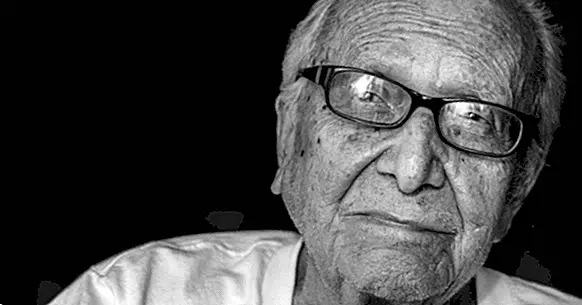Ageism: discrimination by age and its causes
One of the characteristics of situations of discrimination is that many times the person who suffers does not have the necessary means to denounce this injustice.
And there are certain conditions in which there is not even a willingness to organize in a sufficiently large and well-managed number of people so that the voice of the victims is heard loud and clear, as well as their demands. Ageism, or discrimination by age, is one of the clearest examples of this . Let's see what it consists of and in what ways it takes shape on a day-to-day basis.
- Related article: "The 16 types of discrimination (and their causes)"
What is ageism?
In itself, ageism is a fairly simple concept, and its definition could be, simply this: discrimination towards the elderly, that is to say , who belong to the fourth and third age. And is that as with racism or sexism, in the age of large groups of population are alienated from the most important decision making, with which it seems that other generations have "colonized" their living environments .
In addition, ageism is a problem that occurs in virtually all cultures. Although in the Western countries the aging people are not left to die without consuming the resources of the community, it is true that older people continue to be subject to clearly discriminatory measures and attitudes.
Examples of old age in our day to day
Below you can see some expressions of oldness that are so common that many of them pass as normal .
1. The lack of representation in television and cinema
Beyond politics, almost any content that comes to be broadcast on television or that is projected in cinemas has a clear lack of representation of older people. Either they appear very little, or they do not have an important role in what is being told. The reason is that in media so based on the image, old age does not sell because it is considered unsightly.
Thus, older people lack references and they do not have figures that make visible their own problems and their situation .
2. Architectural barriers
Another aspect that clearly discriminates against older people is the presence of architectural barriers, such as steep stairs or the absence of public transport in spaces where walking is difficult.
3. Labor discrimination
One of the clearest signs of ageism is the discrimination suffered by many older people who want to work and who have the ability to do well. The simple fact of passing a certain age is a resounding refusal to be hired, or which means it is difficult to get out of unemployment. Also, this it is suffered even by people who have not yet reached 60 years of age .
On the other hand, as many times older people live more isolated than people of other age groups because of their lack of training in new technologies and problems related to architectural barriers, their political organization is complicated.
4. The stigmatization of sexuality in older people
This point is quite similar to the first, since it is based on an age-old consideration of what is aesthetic and what is unsightly. The nudity and privacy of the elderly is considered unsightly , and therefore its expression is socially admonished, either with clear rejection or with ridicule. Old age is conceived as a vital stage in which you have to worry about other things than sex; Of course, those who support him are always young or middle-aged people, who can enjoy the privilege of openly living their sexuality.
- Related article: "Sexuality in Aging: older people also have sex"
5. Condescension
Old age is seen as the equivalent of ignorance and almost total lack of capacity to think. That is why the practice is very frequent treat those who have entered into old age as if they were children of a few years and they were learning how the world works. This, of course, is another example of ageism that can go through a simple, well-meaning disposition to help others.
- Related article: "Capacitism: discrimination against functional diversity"
6. Control of their living conditions
Many older people are seen as people who are unable to make decisions for themselves and who, therefore, depend on others for guidance tasks. That is to say, age itself is used as an excuse to restrict their freedom .
The types of oldism
Discrimination based on age is expressed both at the personal level and at the institutional level.
Personal ageism
It consists of beliefs, attitudes and prejudices that in practice harm older people. For example, the belief that older people should not be able to vote .
Institutional ageism
It is a type of discrimination that is materially present in objective aspects of how society works. For example, in the institutionalization policy in centers for the elderly, which can sometimes go against the will of older people, or in laws that put the unemployed elderly people in a situation of clear vulnerability .



















